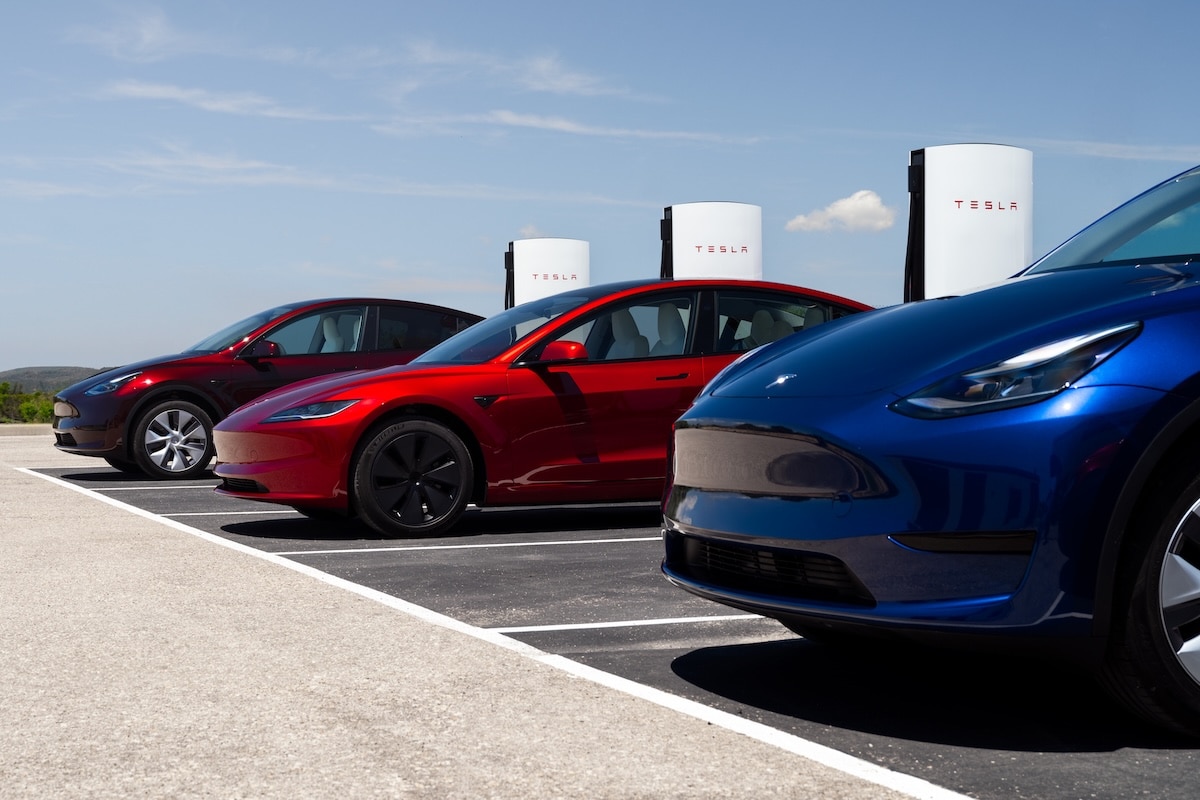Why do V4 chargers promote Tesla’s rivals?

The deployment of Tesla’s new supercharged stations, open to competition, raises many questions.
Tesla has the world’s first private charging network, that’s a fact. When no one believed in electric vehicles, the American manufacturer heavily invested, capturing the market like Toyota did two decades earlier with hybrids. And today, the Supercharger network is a lucrative business largely opened up to competition.
Why? Because it represents a significant source of revenue at a time when the utilization rate of charging stations, particularly outside the United States, is still far from saturation. Nonetheless, the deployment of the new V4 stations, capable of delivering up to 350 kW of power (compared to 250 kW for V3), seems at first glance to be a gift primarily for the competition.
Does the competition say thank you?
This technological advancement certainly enhances the appeal of the Tesla network but, paradoxically, benefits competitor brands more than Tesla itself. Indeed, most Tesla models cannot utilize this power, except for the very niche Cybertruck, unlike some competing electric cars such as the Porsche Taycan, Audi e-tron GT, Hyundai Ioniq 5/6, and Kia EV6.
This means that the vast majority of Tesla owners will not be able to take advantage of the increased power offered by the V4 stations. The Model S and Model X max out at 250 kW while the Model 3 and Model Y, the most popular ones, hover between 170 and 250 kW.
In contrast, manufacturers such as Porsche, Audi, Hyundai, Lucid, and Kia already have models capable of charging between 270 and 320 kW, thus making much better use of these new V4 stations than Tesla vehicles themselves. These vehicles, which were previously limited to the Ionity or Electrify America networks, can now utilize Tesla’s ultra-fast stations, providing a better experience for drivers of other brands than for Tesla owners themselves.
Is Tesla really making a mistake?
The gradual opening of the Supercharger network to other manufacturers, particularly in Europe and the United States via the adoption of the NACS standard, means that Tesla is providing its competitors with infrastructure that is more advanced than what its own cars can utilize.
If we stop at this analysis, one might think that Tesla is giving away something to the competition. But in reality, it is a well-thought-out strategy that provides Tesla with several key advantages:
- Tesla monetizes its network
Every charge of a non-Tesla vehicle on a Supercharger represents additional revenue for the company. Rather than seeing customers switch to Ionity or Fastned, Tesla captures a portion of the charging market, even on competitor cars. - The Tesla network becomes indispensable
By opening its infrastructure, Tesla makes its network essential. More and more manufacturers are adopting the NACS standard, creating reliance on Tesla for charging. - Finally, Tesla is preparing for the future. It is highly likely that Tesla is working on new batteries and software updates allowing its own vehicles to better utilize the 350 kW. At that point, the network will already be in place.
In conclusion, the competition with technology more advanced than Tesla will benefit, for several months, from the ultra-powerful V4 charging network. Then the time will come when Tesla’s new productions will be equipped to handle such charging powers… and the competition could very well be escorted out of its network.
In the meantime, we invite you to read our article on the Tesla subscription available to non-Tesla owners.
This page is translated from the original post "Pourquoi les bornes V4 font la promotion des rivaux de Tesla ?" in French.
We also suggestthese articles:
Also read






